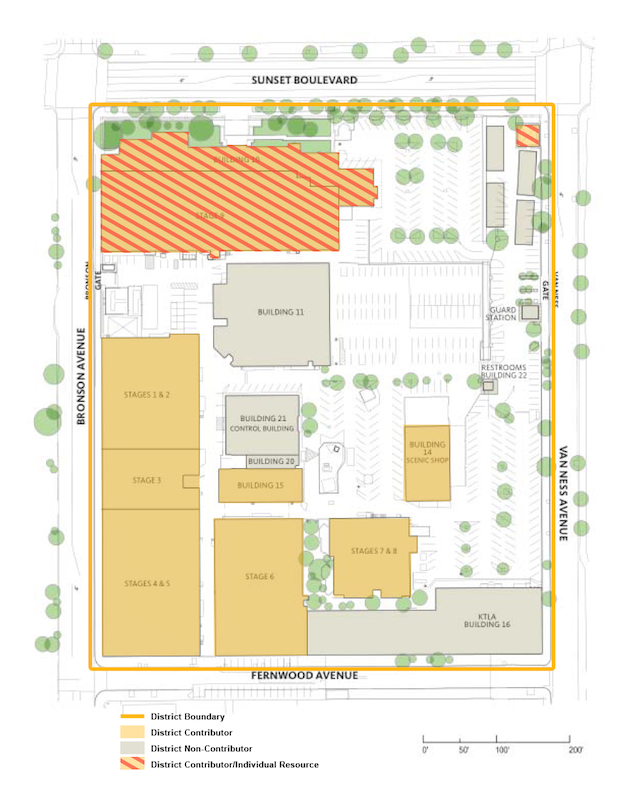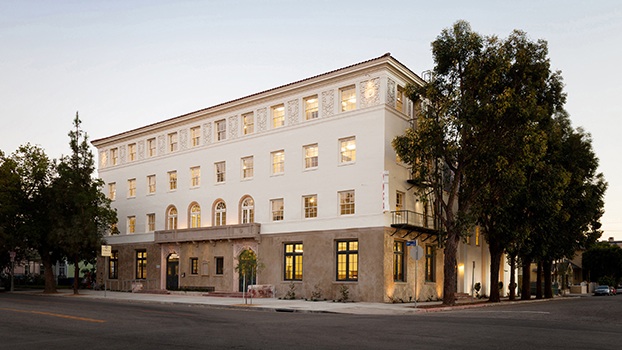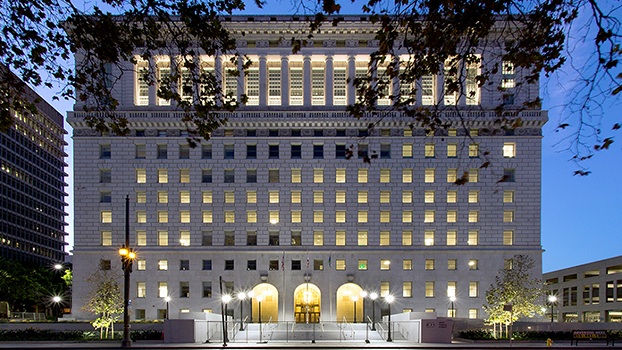House on the run!
The 1892 Decker House, former home of cigar shop owner Frank Decker and his wife Anna, is today one of Pasadena’s treasured Victorian-era buildings. The development of a 70-unit apartment complex for low-income seniors by Bridge Housing required the temporary relocation of the Decker House for its protection during construction. The house will be given a facelift and will be returned to its original location as part of the residential project. Initial plans to relocate the Decker House to a different location fell through, and we like to think Frank and Anna would be happy that their former home will stay in the neighborhood serving an important community need.
See the Decker House “in motion” above. As preservation consultant for the project, Historic Resources Group prepared a relocation plan, moving and protection protocols, and will assist in monitoring the building throughout construction.
Video courtesy of Eric Van den Bosch, Dreyfuss Construction.
HistoricPlacesLA.org launches at the Getty Center.
On March 17th, Historic Resources Group joined the Los Angeles Office of Historic Resources, the Getty Conservation Institute, and several hundred guests at the Getty Center to celebrate the launch of HistoricPlacesLA.org. Developed by the Getty Conservation Institute, HistoricPlacesLA is the first online information and management system specifically created to inventory, map, and describe Los Angeles’ significant cultural resources. The website includes properties identified as part of SurveyLA, the first citywide historic resources survey. HRG has been an integral part of the SurveyLA effort since its inception. A highlight of the event was a “whirlwind tour” of SurveyLA given by HRG Senior Preservation Planner Kari Fowler and other members of the project team, highlighting the process, findings, and challenges.
Image: Kari Fowler presents at the HistoricPlacesLA launch event at the Getty Center.


HRG presents at upcoming CPF CEQA workshop.
Space is still available for the California Preservation Foundation’s workshop “CEQA: How it Really Works,” which will take place at the University of Southern California campus from 9:00 am – 4:00 pm on May 21. Adopted in 1970, the California Environmental Quality Act is a critical tool for protecting the state’s historic resources. All projects undertaken by a public agency, and many projects undertaken by private parties, are subject to CEQA review. Despite its widespread and effective use as a preservation tool, it is frequently misunderstood or misinterpreted. The workshop will explore CEQA from different perspectives: historic preservation professionals, City staff members, land use attorneys, and preservation advocates. Through a series of case studies, participants will discuss the strengths and limitations of CEQA in evaluating project impacts on historic resources, implementing appropriate mitigation measures, and advocating for historic properties. Speakers include Historic Resources Group Principals Paul Travis, AICP, and Christine Lazzaretto; Amy Forbes, Gibson, Dunn & Crutcher; Adrian Scott Fine, Los Angeles Conservancy; and Erik Krause, City of Glendale. For more information and to register for the workshop, please go to the CPF website.
Image: Site plan showing Sunset Bronson Studios in Hollywood used to evaluate impacts to historic resources. The CPF workshop on May 21 will discuss real-world examples to illustrate the CEQA process.
28th Street Apartments Project wins AIA Institute Honor Award.
The 28th St. YMCA was designed by noted architect Paul R. Williams, FAIA. The 28th Street Apartments project, an adaptive reuse, is a recipient of a 2015 AIA Institute Honor Award for Architecture. Koning Eizenberg Architecture of Santa Monica are the designers and architects of record. National AIA awards are rare (only 11 this year), and awards to historic preservation projects are rarer. Congratulations to Principal Architect, Peyton Hall, FAIA, Laura Janssen, and John LoCascio, AIA, who brought the project to fruition over many years with our client, Clifford Beers Housing, Inc.
Photo courtesy of Eric Staudenmaier


Los Angeles Hall of Justice Reopens!
Shuttered for twenty years following the 1994 Northridge Earthquake, the Los Angeles Hall of Justice is finally reopening. Designed by Allied Architects Association and built in 1925, the structure formerly housed the County courts, sheriff, jail and coroner’s office. HRG was the historic preservation consultant on the project, which included seismic repairs and strengthening, accessibility improvements, recommendations for concept design, code compliance, HABS documentation and reuse for County departments. Substantial funding was provided by FEMA; therefore, the project required close coordination with the California Office of Historic Preservation.